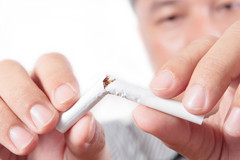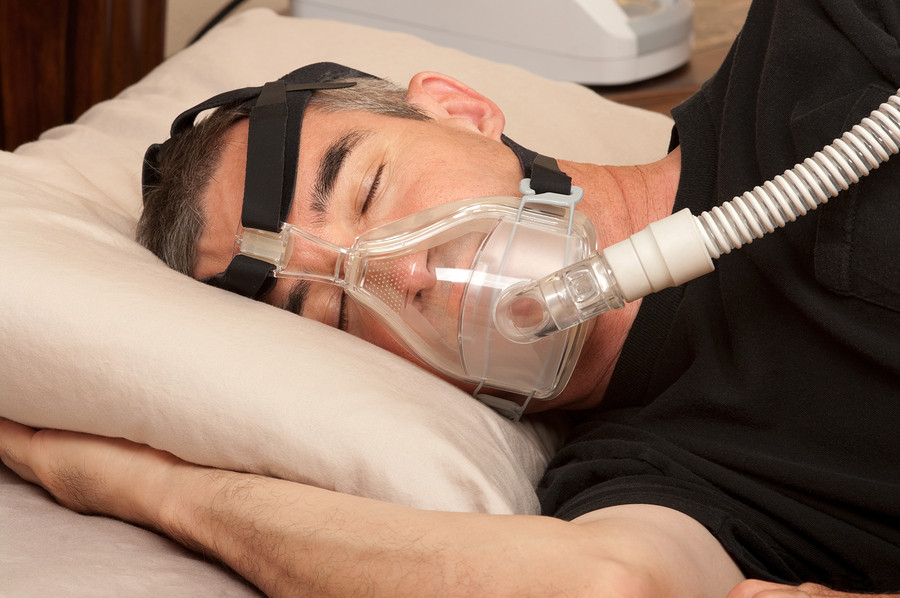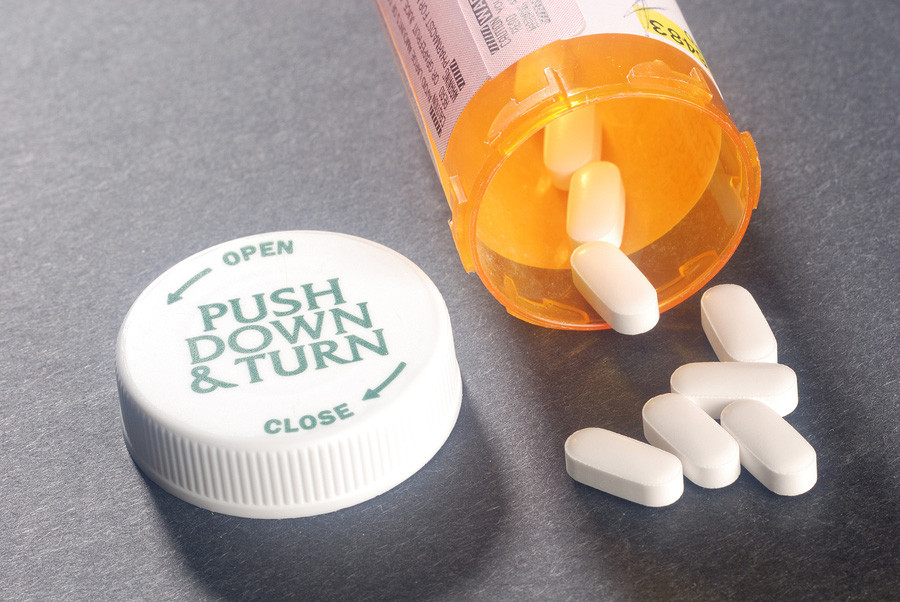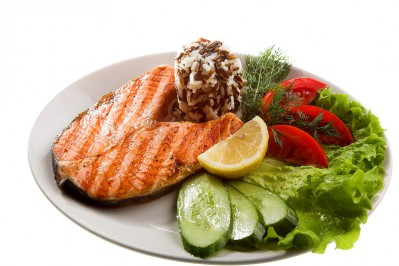
5 timeless habits for better health

What are the symptoms of prostate cancer?

Is your breakfast cereal healthy?

When pain signals an emergency: Symptoms you should never ignore

Does exercise give you energy?

Acupuncture for pain relief: How it works and what to expect

How to avoid jet lag: Tips for staying alert when you travel

Biofeedback therapy: How it works and how it can help relieve pain

Best vitamins and minerals for energy

Should you take probiotics with antibiotics?
Harvard Health Blog
Read posts from experts at Harvard Health Publishing covering a variety of health topics and perspectives on medical news.
Articles
New guidelines aim to help women prevent stroke
The first-ever guidelines for preventing stroke in women don’t fool around. They offer ways to prevent this disabling and potentially deadly event from adolescence to old age. More than half of the 800,000 Americans who have strokes each year are women. Nearly 4 million American women are living with the aftermath of a stroke. And because women live longer than men, their lifetime risk of having a stroke is higher. Those numbers are why stroke prevention is especially important for women. The guidelines cover the use of oral contraceptives, high blood pressure during pregnancy, the use of hormones after menopause, and migraine with aura. They also cover the fundamentals of stroke prevention, like controlling blood pressure, exercising more, eating a healthy diet, and not smoking.
CVS to become first major U.S. pharmacy to stop selling cigarettes
Cigarettes, cigars, and the like are the most deadly product that consumers can legally buy. It’s sadly ironic that they are sold in pharmacies, which are meant to dispense medications and other things designed to heal or promote health. The American Pharmacists Association, the American Medical Association, and other groups have urged pharmacies to stop selling cigarettes. Several major pharmacy chains have been mulling whether or not to take this advice. Today, one of them has acted. The CVS chain has decided to stop selling tobacco products, and will phase out their sales over the next year. The news came in a press release from CVS and an opinion piece published today in JAMA, the journal of the American Medical Association. Pharmacists will likely cheer the decision—one survey of pharmacists showed that only 2% of them favor the sale of tobacco products in their stores.
New study adds caution to testosterone therapy for “low T”
Mass marketing of testosterone therapy may have men eager to try this seemingly simple fix. But the latest science should have them scratching their heads and putting away the credit card—at least for now. A new study published in the online journal PLOS One shows an increase in the risk of having a heart attack in the months after starting testosterone therapy. The potential for danger was highest in older men. A report in the November 6, 2013, issue of JAMA showed that men who used testosterone therapy didn’t fare as well after artery-opening angioplasty as men who didn’t take testosterone. Neither was the type of study that can prove cause and effect. They can only show associations, or links. That means there’s no smoking gun here that testosterone therapy is harmful. But the studies do suggest caution. Given the uncertainly over the benefits and risks of testosterone therapy, what’s a man to do? Take a cautious approach, advises the Harvard Men’s Health Watch.
Too much sitting linked to an early death
Many Americans spend most of each workday sitting in a chair, their fingers the only part of their bodies moving with any intensity. The ease of this modern workday could come at the expense of longevity. A new study of older women in the American Journal of Preventive Medicine finds that sitting for long stretches of time increases the odds of an untimely death. And here’s the kicker: Regular exercise doesn’t do much to diminish the risk of sitting all day. When you sit, you expend fewer calories than you would while standing, and you demand little effort from your muscles. This can help set the stage for diabetes and heart disease. One way to avoid prolonged sitting during the workday is to switch to a standing desk, or one that can adjust to sitting and standing positions. An easier, no-cost solution is to set your smartphone timer to go off every 30 to 60 minutes during the day, and move around when the alarm rings.
Heavy drinking in middle age linked to memory loss in men
For some people, like those with an addiction, any amount of alcohol is too much. For others, drinking alcohol is something of a balancing act — a little may be healthful, while more than a little may be harmful. A new report in the journal Neurology highlights the dual effects of alcohol in men. As part of the Whitehall II study in Britain, researchers assessed the drinking habits of middle-aged men and women three times over a 10-year period. The study participants also took a mental skills test three times over the next 10 years. Compared with men who didn’t drink or who drank moderately, mental decline began to appear one to six years earlier in men who averaged more than 2.5 drinks a day. (There weren’t enough heavy drinkers among women to show any clear differences.) How does a person know if he or she is drinking too much? The CAGE and AUDIT tests can help.
Study says aggressive treatment for diverticulitis is often overused
Diverticulitis, an unpleasant condition that occurs when tiny pouches inside the large intestine become inflamed, can cause intense lower abdominal pain, diarrhea, constipation, a fever, and sometimes a good deal of rectal bleeding. Following a liquid diet for a while can help treat it, but antibiotics, and sometimes even surgery, may be needed. A new study in JAMA suggests that these treatments may be overused.
University of Michigan researchers reviewed the results of 80 studies of diverticulitis and its treatment. While the team agreed that antibiotic use and surgery are sometimes necessary, it concluded that there should be a lesser role for aggressive antibiotic or surgical intervention for chronic or recurrent diverticulitis than was previously thought necessary. Some studies suggest that exercising, controlling weight, and eating a high-fiber diet can prevent diverticular disease. It can also bring relief from constipation, better cholesterol control, and make for more filling meals. Adults should get 25 to 30 grams of dietary fiber every day. It’s best to get it from high-fiber foods, such as beans, whole grains, vegetables, and fruits. Some people need a fiber supplement.
Surgeon General’s 1964 report: making smoking history
On a Saturday morning 50 years ago tomorrow, then Surgeon General Luther Terry made a bold announcement to a roomful of reporters: cigarette smoking causes lung cancer and probably heart disease, and the government should do something about it. Terry, himself a longtime smoker, spoke at a press conference unveiling Smoking and Health: Report of the Advisory Committee of the Surgeon General of the Public Health Service. That press conference was held on a Saturday in part to minimize the report’s effect on the stock market. The 1964 Surgeon General’s report, and others that followed, have had a profoundly positive effect on the health of Americans, despite the tobacco industry’s concerted and continuing efforts to promote smoking. By one new estimate, the decline in smoking triggered by the 1964 report and others that followed prevented more than 8 million premature deaths, half of them among people under age 65. But we still have a long way to go. Some 42 million Americans still smoke, and tobacco use accounts for millions of deaths each year around the world.
Mindfulness meditation may ease anxiety, mental stress
Many people practice meditation in hopes of staving off stress and stress-related health problems, even though the evidence for doing so is spotty. A new study that analyzed the results of nearly 50 solid clinical trials of meditation shows that mindfulness meditation can help ease psychological stresses like anxiety, depression, and pain. One way it does this is by training you to experience anxious thoughts or stresses in completely different and less emotionally disturbing ways. Mindfulness-based stress reduction training, developed by Dr. Jon Kabat-Zinn at the University of Massachusetts Medical School in Worcester, MA, is now widely available in cities throughout the United States. You can also learn it yourself from books or online recordings. Or try this short meditation, from the Zen Buddhist monk Thich Nhat Hahn: “Breathing in, I calm my body. Breathing out, I smile. Dwelling in the present moment, I know this is a wonderful moment.”
94-year-old Master track star an inspiration to all
A recent article in Parade magazine caught my eye because it has lessons for us all. The article was about Olga Kotelko, a 94-year-old woman, who is a competitive runner and track star. Her age alone is impressive. The fact that she didn’t enter her first Master’s competition until she was 77—an age when many people are hanging up their sneakers—is amazing. The article offers six lessons that anyone can learn from Ms. Kotelko’s daily life. She can be an inspiration for anyone, at any age, who wants to start exercising or to exercise more. You are never too old or too frail to start exercising. Start out with a safe, easy program. Gradually add more and harder exercise. Who knows where you might end—possibly in an event challenging the likes of Olga Kotelko.
Tea: Drink to your health?
Could tea be a health beverage? Eleven new studies in the American Journal of Clinical Nutrition highlight the many ways that tea may improve health: Tea drinking appears to lower the risk for heart disease and stroke, may strengthen bones, and appears to improve mood, concentration, and performance. Natural compounds called polyphenols in tea might protect against several cancers, including those of the prostate, GI tract, lungs, breast, and skin, and may also increase metabolism and promote weight loss. Those possible benefits apply to tea, not tea extracts condensed into pills. If you’re a tea drinker, enjoy your favorite brew with the added satisfaction that it may be good for your health. If you aren’t, there’s no reason to start.
Two-thirds of seniors need help doing one or more daily activities
A longer lifespan can be a double-edged sword. You live for more years, but the later years may not necessarily be what you had in mind. We’ve known for some time that about 25% of older Americans can’t perform some activities of daily living without help. But we don’t know much about the other 75%. A new study suggests that two-thirds of Americans over age 65 need help doing everyday activities such as eating, bathing, and getting in and out of bed or a chair. Things you can do to help ward off becoming frail or disabled include staying active, managing weight and eating a healthy diet, preventing falls, making connections with others, and seeing your doctor(s) regularly.
Treating severe snoring can help with tough-to-control blood pressure
Sleep apnea—pauses in breathing while sleeping followed by snoring-like gasps for breath—can cause daytime drowsiness and mental fatigue. It can also boost blood pressure and the risk for developing heart disease. A new study suggests that treating sleep apnea by using a breathing machine during sleep can make a difference for people with hard-to-treat high blood pressure. Although blood pressure medications offer a bigger bang for the buck to reduce blood pressure, treating sleep apnea can help, and offers other benefits as well. Getting used to using a breathing machine, which delivers continuous positive airway pressure (CPAP), may take some work. One key is to find a mask that works, which may be a trial-and-error process.
Easy exercises for couch potatoes
If you have trouble finding the motivation to break away from the television and exercise, try couchersizing—staying on or near your couch and exercising during commercial breaks. Why bother? A growing body of evidence links the amount of time spent sitting to illness and even death. And just minimizing long periods of inactivity, like exercising during commercial breaks, can help reduce the risk of injury and may even help you live longer. You can work many different muscle groups while seated upright on a couch. Want to get your heart rate up, work the oblique muscles on the sides of the abdomen. To whittle your waist, try twisting your torso from side to side for the length of a commercial break. You can even exercise while lying on the couch.
Eating nuts linked to healthier, longer life
Move over, apples: A handful of nuts a day keeps the doctor away—and might help you live longer, according to new results from two long-running studies. Writing in tomorrow’s New England Journal of Medicine, Harvard researchers showed that daily nut-eaters were less likely to die from cancer, heart disease, and respiratory disease. Overall, the daily nut-eaters were 20% less likely to have died during the course of the study than those who avoided nuts. (Peanuts, which are actually legumes, counted as nuts in this study). While everybody is searching for the perfect nut, the health benefits hold true for variety of nuts.
Do “energy boosters” work?
Stroll the aisles of any pharmacy or “health food” store and you’ll see a multitude of herbs and other supplements that claim to boost energy. Yet there is little or no scientific evidence to support such claims for most of these substances. The fact is, the only thing that’ll reliably boost your energy is caffeine or other stimulant—and their effects wear off within hours. Substances commonly touted as energy boosters include chromium picolinate, coenzyme Q10, creatine, dehydroepiandrosterone (DHEA), ephedra, ginkgo biloba, ginseng, guarana, and vitamin B12. Instead of relying on a supplement for energy, try switching to a healthful diet—more vegetables, fruits, whole grains, nuts, lean protein, and unsaturated fats—and exercising more. That’s truly a better way to beat an energy shortage, and it’s one your whole body will appreciate.
Cholesterol and statins: it’s no longer just about the numbers
Updated cholesterol guidelines released yesterday by the American Heart Association and American College of Cardiology aim to prevent more heart attacks and strokes than ever before. How? By increasing the number of Americans who take a cholesterol-lowering statin. The previous guidelines, published in 2002, focused mainly on “the numbers”—starting cholesterol levels and post-treatment levels. The new guidelines focus instead on an individual’s risk of having a heart attack or stroke. The higher the risk, the greater the potential benefit from a statin. A statin is now recommended for anyone who has cardiovascular disease, anyone with a very high level of harmful LDL cholesterol, anyone with diabetes between the ages of 40 and 75 years, and anyone with a greater than 7.5% chance of having a heart attack or stroke or developing other form of cardiovascular disease in the next 10 years.
On Veterans Day, don’t let the “invisible wounds” of PTSD remain hidden
Millions of American men and women have served in the Armed Forces, protecting and defending our nation. Although many died, most returned home to “pick up their lives.” That isn’t always easy. For some veterans, the trauma of war changes the brain in ways that can cause long-term problems. According to the American Psychiatric Association, more than 300,000 veterans of the wars in Iraq and Afghanistan have been diagnosed with PTSD. Countless others probably suffer from this condition but have never sought help for it. Even sadder, in 2012 more military deaths were caused by suicide than by combat. If you know a veteran, thank him or her for having served our nation. And if you think he or she is having trouble, bolster your courage and ask. Beginning the conversation may open the door to healing.
Adopt a Mediterranean diet now for better health later
It’s been a big year for the Mediterranean diet. Convincing evidence published in 2013 has shown that this kind of eating pattern is effective at warding off heart attack, stroke, and premature death. While you probably get the biggest payoff by adopting such a diet early in life, a new study shows that doing it during midlife is good, too. In the study, women who followed a healthy diet during middle age were about 40% more likely to live past the age of 70 without chronic illness and without physical or mental problems than those with less-healthy diets. The healthiest women were those who ate more plant foods, whole grains, and fish; ate less red and processed meats; and had limited alcohol intake. That’s typical of a Mediterranean-type diet, which is also rich in olive oil and nuts.
Home score for strep throat in adults could avoid unnecessary doctor visits
Telling the difference between run-of-the-mill sore throat caused by a virus, which doesn’t require medication, from bacteria-caused strep throat, which should be treated with antibiotics, is a tricky thing at any age. Physicians from Harvard Medical School, MIT, and the Skaggs School of Pharmacy in California have come up with a scoring system that could save adults a trip to the doctor for what would most likely turn out to be a garden variety sore throat (it hasn’t been tested in kids yet). It’s based on symptoms, age, and the percentage of people in your area who have tested positive for strep within the last two weeks. If your score is high, then head to your doctor’s office. If it indicates that you are unlikely to have strep, there’s little need for you to rush in for an exam or throat culture. The researchers estimate that use of this kind of score could prevent 230,000 office visits in the United States each year and keep 8,500 men and women from getting antibiotics they don’t need.
Balance training seems to prevent falls, injuries in seniors
Most people take balance for granted. They navigate without thinking, effort, or fear. For millions of others, though, poor balance is a problem. Some struggle with long-term dizziness or imbalance. Others suffer balance-related falls and injuries. A new study concludes that exercise can reduce not only the odds of falling but the odds of sustaining fall-related injuries. In many urban areas, there’s no shortage of classes aimed at improving balance. You can find them at senior centers, Y’s and Jewish Community Centers, health clubs, and the like. There’s also a lot you can do at home. The American College of Sports Medicine Standing recommends standing with one foot in front of another, lifting a foot off the floor, and shifting weight in various directions as three examples of home exercises.
Radiation for breast cancer can increase heart risks
Radiation, on its own or coupled with other treatments, has helped many women survive breast cancer. Yet radiation therapy can cause the appearance of heart disease years later. New research published in JAMA Internal Medicine estimates that the increased lifetime risk for a heart attack or other major heart event in women who’ve had breast cancer radiation is between 0.5% and 3.5%. The risk is highest among women who get radiation to the left breast—understandable, since that’s where the heart is located. The heart effects of radiation begin emerging as soon as five years after treatment. However, future heart risk should not be the reason to abandon this important component of treatment. Cancer experts are doing more and more to minimize the amount of radiation the heart receives.

5 timeless habits for better health

What are the symptoms of prostate cancer?

Is your breakfast cereal healthy?

When pain signals an emergency: Symptoms you should never ignore

Does exercise give you energy?

Acupuncture for pain relief: How it works and what to expect

How to avoid jet lag: Tips for staying alert when you travel

Biofeedback therapy: How it works and how it can help relieve pain

Best vitamins and minerals for energy

Should you take probiotics with antibiotics?
Free Healthbeat Signup
Get the latest in health news delivered to your inbox!
Sign Up

























